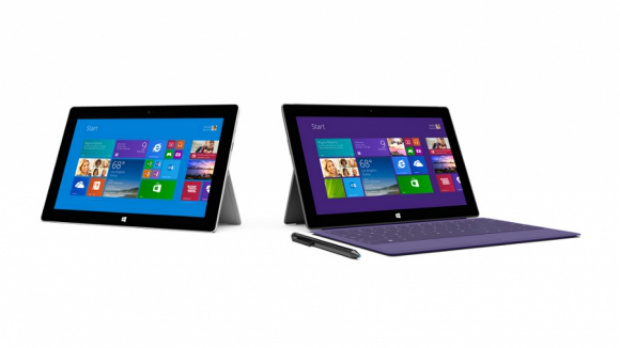A big jump in sales in Microsoft’s consumer devices unit, which makes the Xbox console and Surface tablets, helped lift its revenue 14% and slightly improve profits year on year in its second fiscal quarter.
Revenue for the quarter ended 31 December came in at $24.51 billion, exceeding the consensus estimate of $23.68 billion from analysts polled by Thomson Reuters.
Net income grew to $6.56 billion, or $0.78 per share, from $6.38 billion, or $0.76 per share, in the same quarter a year earlier, Microsoft announced Thursday.
“I am pleased with the results as we exceeded our expected revenue growth while continuing to maintain our focus on improved execution and cost management,” CFO Amy Hood said in a conference call to discuss the results.
Adjusting for deferred revenue related to special offers, revenue growth in the quarter would have been 11% and earnings per share would have been down 4%.
The Devices & Consumer Hardware unit grew revenue 68%, from $2.80 billion to $4.72 billion, as Microsoft sold 7.4 million Xbox consoles into the retail channel, almost 4 million of them the new Xbox One.
Revenue from Surface tablet sales more than doubled sequentially, from $400 million in the first quarter to $893 million in the second quarter. Units sold also more than doubled.
However, as spotted by Computerworld in Microsoft’s 10-Q filing with the government, the cost of making and marketing Surfaces exceeded the revenue, so Microsoft lost almost $40 million in that business.
Asked about that on the conference call, Hood said Microsoft has learned a lot since it launched the product about integrating its OS and providing access to cloud services. “We have to make more meaningful progress,” she said.
Microsoft is committed to improving the Surface technology, pricing strategy and gross margins, according to Hood.
Gross margins in Devices & Consumer Hardware fell 46% because cost of revenue shot up 111% to $2.3 billion.
Devices & Consumer Licensing revenue dropped 6% to $5.40 billion year on year, as sales of Windows to hardware partners that resell it with PCs, tablets and other devices declined 3%. Windows OEM Pro sales to businesses grew 12%, but Windows OEM sales to consumers erased that gain. Retail sales of Windows declined $264 million, or 69%.
Office consumer revenue fell 24%, due to take-up in Office 365 Home Premium and to weak PC sales. Windows Phone revenue grew 50%.
Revenue from the Devices & Consumer category fell from $2 billion to $1.8 billion. This category includes sales of online ads in Microsoft’s websites and sales of Office 365 Home Premium, the subscription-based version of Office for consumers. Search ad revenue grew 34%, and overall online ad revenue was up 6%.
There are now more than 3.5 million Office 365 Home Premium subscribers, Microsoft said.
Overall, the Devices & Consumer revenue grew 13% to $11.91 billion.
Meanwhile, Commercial revenue grew 10% to $12.67 billion, helped by strong software licensing sales growth of SQL Server, System Center and of enterprise cloud computing products, like Office 365, Azure services and Dynamics CRM Online.
System Center and SQL Server sales each grew by double digits, and revenue from Windows licenses sold in volume to enterprises grew 10%.
Commercial cloud services revenue, which includes Office 365, Dynamics CRM Online and Azure, was up 107%.
Microsoft’s overall gross margin for the quarter was flat at $16.2 billion.
Unearned revenue grew 12% to $19.5 billion and revenue contracted but not yet billed was also up 12% to more than $23 billion. “To me, this is important, as these long-term commitments demonstrate the confidence that customers have in our product roadmap,” Hood said.
The company didn’t provide any updates on its search for a new CEO. Steve Ballmer announced about five months ago his intention to retire before the end of August. Hood said the acquisition of Nokia’s smartphone business is on schedule to close in the current quarter. No update was provided on the status of the reorganisation Ballmer unveiled in July that seeks to make Microsoft a more cohesive company where business units collaborate more tightly.
There was also no talk about whether Windows 8.1 will be followed by another point update or by a revamped new version. Also not addressed was the topic of whether Windows Phone and Windows RT will be merged in the future to a single mobile OS.
Juan Carlos Perez, IDG News Service
@JuanCPerezIDG








Subscribers 0
Fans 0
Followers 0
Followers